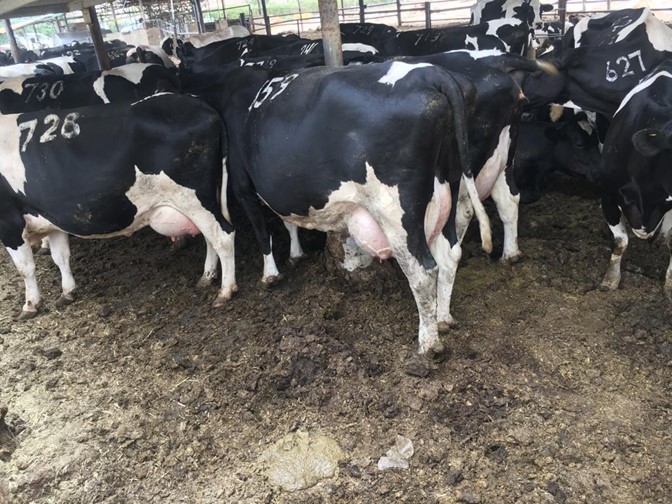Introduction
If you want to establish a cattle farming business in Kenya, you need to know its importance so you can thrive. Cattle farming in Kenya offers a lucrative opportunity due to the high demand for beef and dairy products, ample land, labor availability, and favorable climate. Types of cattle farming include beef, dairy, and dual-purpose farming, each suitable to specific regions and purposes.
To venture into this business, you must first acquire knowledge through various sources, identify a unique market, survey competitors, establish an online presence, create your portfolio, design your business strategy, and put into action effective marketing strategies to attract and retain customers
To start a cattle farming business in Kenya:
1. Know What Cattle Farming Is

To begin a cattle farming business in Kenya, know what cattle farming is.
Cattle farming business involves raising and selling cattle for various purposes, such as meat, milk, or both.
Cattle farming is a lucrative venture in Kenya, offering sustainable opportunities for profit. The demand for beef and dairy products remains high, thanks to favorable market conditions, ample land availability, and a skilled labor force.
There are various types of cattle farming:
- Beef Farming: This involves raising cattle primarily for meat production. It’s suitable for regions with low rainfall and extensive grasslands, such as Kenya’s arid and semi-arid lands (ASAL).
- Dairy Farming: Here, you raise cattle mainly for milk production. This type thrives in areas with high rainfall and fertile soils, like Kenya’s highlands.
- Dual-purpose Farming: Breed cattle for both meat and milk production. It’s ideal for regions with moderate rainfall and diversified farming systems.
2. Acquire Knowledge of Cattle Farming
To kickstart a cattle farming business in Kenya, acquire knowledge of cattle farming.
Understanding the ins and outs of cattle farming helps you:
- Choose the right type, breed, and number of cattle for your farm and market.
- Manage your cattle’s nutrition, health, and reproduction effectively, ensuring health and productivity.
- Prevent and control diseases and pests that can harm your cattle and pose risks to human health.
- Learn best practices in handling, housing, feeding, milking, and marketing cattle to boost efficiency and enhance product quality.
- Understand legal and environmental regulations ensuring your farm operates within the law.
To start:
- Work with knowledgeable cattle producers who can mentor you.
- Reach out to agricultural experts, teachers, and successful producers in your area for guidance.
- Educate yourself with resources like livestock journals, books, and credible online courses.
- Attend workshops, seminars, and events to keep up with the latest trends and network with industry professionals.
3. Identify Your Unique Market
To commence a cattle farming business in Kenya, identify your unique market.
Identifying a unique market for your cattle farming venture offers clear benefits. Firstly, it brings focus to your business goals and helps allocate resources efficiently. Secondly, it enables you to understand and cater to your target market’s specific needs, fostering customer satisfaction.
Additionally, it sets you apart from competitors, enhancing your brand reputation. To find the right market, assess your skills and passions, conduct market research, and perform a SWOT analysis. Validate your specialty through feedback from surveys and engage with industry experts.
4. Survey Your Competitors
To initiate a cattle farming business in Kenya, survey your competitors.
To conduct a comprehensive survey:
- Employ search engines and industry databases like Semrush to gather insights and recommendations.
- Assess your competitors’ online presence, content, and customer engagement, including reviews and feedback.
- Compare your services, prices, and strengths/weaknesses to understand your position in the market.
Here’s why:
- Comprehending your competitors’ trends and challenges provides valuable market insights for seizing opportunities.
- Analyzing your competitors’ successes and failures helps you adopt best practices and avoid common mishaps.
- Scrutinizing your competitors helps you uncover market gaps, identify fresh segments, and exploit weaknesses.
Use your analysis to:
- Craft a Unique Selling Proposition (USP) highlighting your strengths.
- Position your brand effectively in line with your values and audience.
- Develop specific marketing strategies to attract and retain customers.
5. Establish Your Online Presence
To start a cattle farming business in Kenya, establish your online presence.
You make your website professional and appealing website when you:
- Choose a memorable domain name using tools like Domain Name Generator or Namecheap.
- Select a user-friendly e-commerce platform such as Shopify or WooCommerce.
- Design an attractive layout and logo with tools like Wix or Canva.
- Add engaging content and clear contact details using Grammarly or Google My Business.
Maximize your website for online marketing:
- Improve visibility with SEO techniques like keyword research and optimal content.
- Make use of social media buttons to promote your site across platforms like Instagram or Twitter.
- Create authority with a blog using WordPress or Medium.
- Track performance with tools like Google Analytics for better results.
6. Create Your Portfolio
To kick off a cattle farming business in Kenya, create your portfolio.
To develop your portfolio:
- Choose recent and impactful projects that demonstrate your skills.
- Detail the problem, solution, process, and results for each project, and support with data and client feedback.
- Use charts, graphs, and testimonials to make your achievements easy to understand and engaging.
Boost your portfolio:
- Build a professional website and track its performance with Google Analytics.
- Share your portfolio on Facebook, Instagram, and LinkedIn.
- Design visually appealing flyers and distribute via email or direct mail.
- Incentivize clients to refer you.
- Reward repeat clients with loyalty programs.
7. Design Your Business Strategy
To launch a cattle farming business in Kenya, design your business strategy.
To create your business strategy, consider using templates or writing a comprehensive business plan.
It is beneficial for several reasons. It:
- Helps you focus your actions and set achievable goals.
- Allows you to identify funding sources and manage funds efficiently.
- Makes you choose appropriate marketing channels for maximum impact.
- Supports you to establish organizational structures and implement quality control measures.
Regularly review performance metrics and gather feedback from customers and stakeholders to refine and adapt your strategy when necessary.
8. Cultivate Leads
To start a cattle farming business in Kenya, cultivate leads.
Building leads help you expand your customer base, increase revenue, and gain market share. To do this effectively:
- Use web search engines, industry databases, and online marketplaces. Run online campaigns with tools like Google Ads, Bing Ads, or Facebook Ads for your target audience.
- Engage potential customers on platforms like Facebook, Instagram, and LinkedIn. Use management tools such as Hootsuite or Buffer to maximize your reach.
- Communicate directly with your audience through platforms like Mailchimp. Provide valuable content and offers to encourage engagement.
- Attract leads with free consultations, trials, or discounts.
- Manage appointments efficiently with tools like Calendly or Acuity Scheduling.
- Develop informative content such as e-books or guides using tools like Canva or Visme.
To convert your leads into customers:
- Maintain Regular Follow-ups: Stay in touch through phone calls, emails, or messages.
- Provide Unique Solutions: Understand your leads’ needs and offer custom solutions.
- Craft Persuasive Proposals: Create proposals with details highlighting benefits and advantages, including testimonials and guarantees.
Recap
To start a cattle farming venture in Kenya, key steps include acquiring knowledge of cattle farming methods, finding your unique market, surveying competitors, establishing your online presence, and creating your portfolio.
Also, design your business strategy and employ necessary marketing strategies to attract and retain customers. With these steps, you can position your business for success in meeting the high demand for beef and dairy products.
With dedication and strategic planning, your cattle farming business can thrive in Kenya’s favorable climate and market conditions.


















